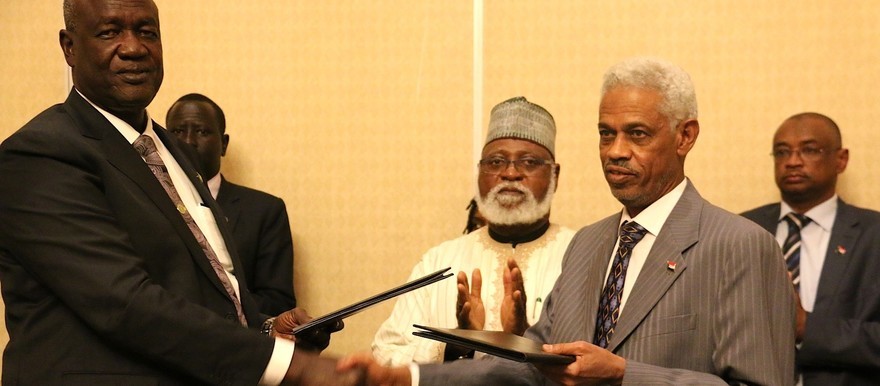Sudan and South Sudan have accepted a map presented to them by the African Union (AU) as the basis for establishing a Safe Demilitarised Border Zone (SDBZ) in line with the 2012 Addis Ababa Cooperation Agreement.
The creation of this demilitarized zone does not end all border disputes between the two countries, but merely means that they nominally agree not to settle them by force of arms and to back their forces away from the AU-demarcated area.
“The Parties reiterated that the SDBZ and its centreline represent only the location of the separation line between the armed forces of the two States and do not have any bearing on the definitive and final location of the boundary,” reads a document signed Wednesday by defence ministers of both countries.
According to the document, titled the ‘Decisions of the Joint Political and Security Mechanism,’ the parties have accepted a map presented to them by the African Union High-level Implementation Panel in November 2011 as the basis for this demilitarized zone.
Sudanese Defense Minister Awad Ibn Auf and his South Sudanese counterpart Kuol Manyang agreed to activate all the mechanisms that are related to the Joint Political and Security Mechanism and the Joint Border Verification and Monitoring Mechanism in particular, in coordination with the UN Interim Security Force in Abyei (UNISFA).
UNISFA was given a leading role in the border monitoring per the terms of the 2012 Cooperation Agreement, but the Ethiopian-led mission headquartered in Abyei has since done little beyond the single disputed area of Abyei.
The meeting of the two defense ministers in Addis Ababa on Wednesday was witnessed by Abdelsalami Abubakar, a member of the AU High-level Implentation Panel.



